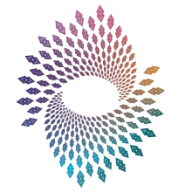Eric Kohner on What It Takes to Be a Leader
- POSTED ON DECEMBER 15, 2021

Here at CTI, we love sharing the work of our esteemed Front-of-Room Leaders (also known as CTI Faculty). Nina Simonds is a Certified Professional Co-Active Coach and an internationally recognized facilitator. Nina hosts the Let's Get Real podcast, in which she explores the intersection of personal development and social change.
In one of her episodes, Nina had a conversation with a CTI colleague, Eric Kohner, an internationally recognized executive coach and keynote speaker. Eric is the founder of EKCOsystem, a multinational corporate training firm dedicated to bringing the whole human being into business. Eric is also a longtime CTI Faculty member.
In the podcast, Eric spoke candidly about how he is learning to navigate the waters of his own privilege in his work with emerging talent. He also discussed various topics in leadership development and laid out why it is important for every leader to be a “BADASS”: bold, authentic, disruptive, agile, spacious, and supportive.
Here are some excerpts from their conversation.
Nina: I’m pleased to introduce today’s guest. I’ve known Eric Kohner for a long time. He’s a pioneer in coaching, one of the godfathers of Co-Active coaching. He teaches Co-Active coaching skills, and he brings wisdom and love to his work. Welcome, Eric. It’s so great to have you on Let's Get Real.
Eric: It’s great to be here, Nina! Yes, we have a long history, having worked together through the Co-Active Training Institute.
With your work with SNUG, which is backwards for GUNS, you are working with an evidence-based group in New York that works to decrease violence. Would you be willing to tell us more about this story?
I turned 65 four years ago, and this will probably happen to you when you hit 65. I was reading a book called The New Jim Crow at the time, and I realized that I live in a bubble. I didn’t always live in a bubble, but at that point in my life, I was. I was in a nice comfortable bubble where I teach people, mostly white, this wonderful thing called coaching. Then I thought, “What do I want to do for the next 15 years?” And I realized that it was doing something in the criminal justice system. I’m not a lawyer, and I’m not an “activist,” so what can I do? Then I realized that I wanted to bring coaching and facilitation skills into that environment, and that started the whole thing.
I took the SNUG training. I wanted to learn more about SNUG before doing anything, to see if what we have to offer is worthwhile. When I was going through training, I noticed that there is already a coaching component. It’s not as fleshed out as CTI. So, about a year and a half ago, I offered to approach CTI, and we delivered three Fundamentals [of Co-Active Coaching courses] to their entire team. During my stay there, I understood that I had, and continue to have, a lot to learn. I tell people that I go there because I believe in coaching. Working in that environment had a profound impact on my life. It’s absolutely opened up something in me for which I’m grateful.
I grew up on the borderline of Washington Heights and Harlem. I grew up in a really diverse setting, not just in terms of ethnicity and race, but also in terms of socioeconomic status.
I had been among people from various levels of socioeconomic status, and working with SNUG seems like I’m returning to that environment. I realized this is where I need to be.
You said your awakening started five years ago, not in 2020. Can you share more about what that was like for you?
My parents were refugees from Nazi Germany, and I was taught at a young age about the world’s inequities and the importance of not falling into that trap. That’s something I’ve had my entire life. And still, I was sucked into that system. Four years ago, most of my friends were white people. If you look at my Facebook friends, that was the circle of people that I was around. I made a conscious choice.
At that point, I realized that I didn’t want my tombstone to say “he helped the middle and upper management perform better.”
That was not what I wanted to be remembered for. I desired something different.
Would you tell us more about your work around the 5 Knowledge Centers?
The 5 Knowledge Centers — I must give credit to two team coaches, Krister Lowe and Pim Harder, with whom I co-created this. The head is where we access reason, the heart is where we access love and affection, the gut is where we access intuition, the groin is where we access passion and creativity, and the hands are the kinesthetic, expressive portion of the body where we also make things. These are all places where we can all access knowledge. Basically, “chakras for dummies.”
That’s what I like about it: it’s straightforward. People easily get it. On a side note, I’m gathering data on training, and most individuals in organizations use their heads in their hands. And the majority of people in underserved and what I call emerging talent communities are motivated by their heart, gut, and groin.
The groin, interesting. There’s a lot of stigma surrounding sex that makes it difficult to bring up in casual conversation. So, I’m really pleased that you want to bring this to more leaders and that you already are. Could you tell us more about it?
It’s so interesting, because the only time I really get any flack is in the United States. They don’t even blink an eye when I do this in Europe. I like to remind them that the term “groin” refers to a medical term. It’s not sexual; it’s the muscles in your thighs. This is the groin. So, there’s nothing sexual about that word.
How do you help leaders get over their discomfort (talking about the groin) around this?
Well, not all leaders are uncomfortable. And that has to do with any knowledge center. If I was to pick a knowledge center that I’m uncomfortable with, it is the head. I need more work around reason. But if I’m working with somebody that is having issues with that part of their body, I may just get them up and start dancing. Specifically, Latin music is a good way to get people into it. I also get in touch with what they’re passionate about. It’s not necessarily sexual.
There’s nothing wrong with having a sexual desire. It’s what we do with that, just like anything else.
If we’re responsibly creating from that, I think that can be a wonderful thing.
We’ve been working with the body and being Co-Active. Do you believe trauma can occur in any of the Five Knowledge Centers?
I’ve got to be honest — I've never thought about it and I don’t have an answer to it. But my gut, my gut tells me that trauma can happen in any of the knowledge centers. I’ll give you an example.
One of the most traumatic events in my life was just going to school. That was traumatic for me, because my intelligence wasn’t recognized in that environment.
I couldn’t fit into the mold that they were teaching — mostly head stuff. So, the trauma happened in a very intellectual environment, but it followed me the rest of my life. And I think it informed me. I still remember, because I have a reading disability, sometimes I had to get up and read something in front of the class, and every time I had a panic attack.
Please tell us more about the BADASS acronym.
It happened about five or six, maybe even seven years ago, a potential client said, “I need something really innovative and off the wall and different. So, send me a proposal.” I whipped this up in, like, a half hour, and out came BADASS. It’s an acronym. B stands for BOLD. A stand for AUTHENTIC. D stands for DISRUPTIVE. A is AGILE, and the two S’s are SPACIOUS and SUPPORTIVE. In the proposal, I wrote that digital leaders need to be badasses. I submitted it and did not get the job. I put it away in my computer and didn’t look at it for five years. And now, I offer this as an ongoing leadership program called BADASS Leadership.
What does it take for you to be a leader? Please let us know what you think. Drop a comment below to share your thoughts on this blog post.
Nina Simonds
Nina Simonds is a seasoned executive and team coach with more than 20 years of experience developing people. In addition to training and supervising coaches all other the world in Co-Active coaching, Nina is the founder and owner of her own coaching and training firm, where she designs and leads a variety of leadership and team development programs with outcomes that range from developing emerging leaders to building trust within a cross-functional team. As a facilitator and team coach for Microsoft’s Foundations of Management residential, Nina helped managers of managers develop new leadership capability to create sustainable and systemic change in their teams.





